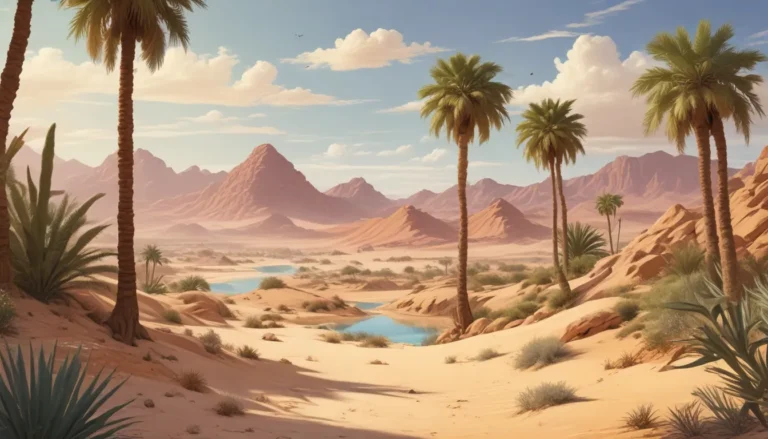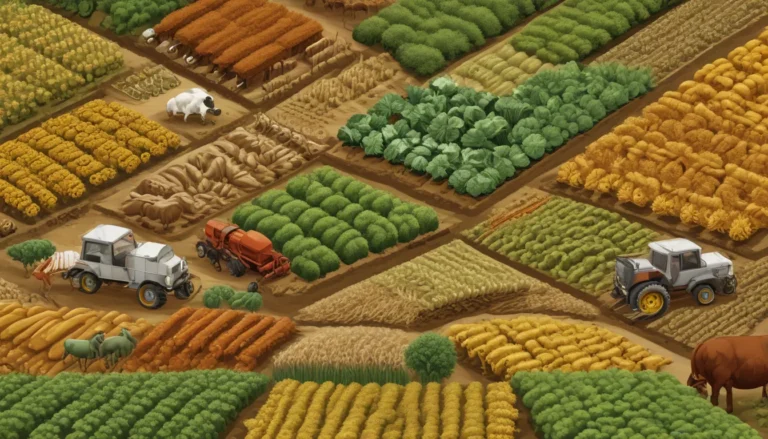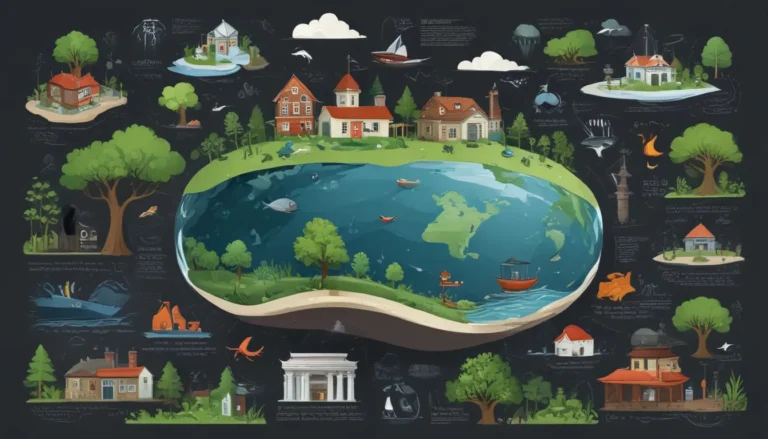A Note About Images: The images used in our articles are for illustration purposes only and may not exactly match the content. They are meant to engage readers, but the text should be relied upon for accurate information.
If you’ve ever marveled at the beauty of a floodplain or wondered about its significance in the grand scheme of our environment, you’re in for a treat. Floodplains are more than just low-lying areas next to rivers; they are dynamic landscapes that play a crucial role in shaping our world. From flood mitigation to biodiversity conservation, floodplains offer a wide array of benefits to both humans and wildlife alike.
So, let’s embark on a journey to uncover 17 surprising facts about floodplains that will leave you in awe of these remarkable natural wonders.
Key Takeaways:
- Floodplains are essential for biodiversity, agriculture, and recreation, serving as natural flood protection and critical habitats for endangered species.
- Understanding the historical, cultural, and ecological significance of floodplains is essential for their conservation and sustainable use, ensuring a harmonious balance between human needs and environmental preservation.
The Formation of Floodplains
Floodplains take shape through the deposition of sediment carried by rivers during flooding, gradually building flat, fertile lands ideal for agriculture.
A Natural Flood Mitigation System
Acting as a buffer zone, floodplains absorb excess water during floods, minimizing the risk of catastrophic damage to surrounding areas and safeguarding both human settlements and ecosystems.
A Playground for Biodiversity
The lush floodplain ecosystem teems with diverse plant and animal life, thriving in the moist soil and periodic flooding that create a unique habitat for a multitude of flora and fauna.
Essential for Migration
Floodplains serve as crucial stopover points for migratory birds, providing food sources and shelter for these winged travelers during their long journeys.
Floodplains and Agriculture
The rich alluvial soil of floodplains has fueled agricultural practices for centuries, supporting the cultivation of staple crops like rice, wheat, and corn.
A Recreational Paradise
Beyond their agricultural benefits, floodplains offer picturesque landscapes and recreational opportunities such as hiking, fishing, and boating, attracting nature enthusiasts and adventurers alike.
Habitat for Endangered Species
Due to their rich biodiversity, floodplains serve as critical habitats for endangered species, playing a pivotal role in wildlife conservation efforts.
Floodplain Rehabilitation
Ongoing efforts to restore and rehabilitate floodplains aim to reintroduce natural flood patterns and preserve native habitats, enhancing the resilience and health of these ecosystems.
Historical Significance
Floodplains have a profound historical significance, having influenced the settlement patterns of ancient civilizations such as those along the Nile River in Egypt and the Indus River in Pakistan.
Challenges of Urban Development
Urban expansion often encroaches upon floodplains, increasing flood risks. Sustainable development practices and land-use planning are vital to mitigate these hazards.
Floodplain Mapping
Accurate mapping of floodplains using advanced technologies like remote sensing is essential for effective flood management and disaster preparedness.
Vulnerability to Climate Change
Floodplains face heightened vulnerability to climate change impacts like rising sea levels and extreme weather events, necessitating adaptation measures for ecosystem survival.
Cultural Significance
Floodplains have inspired artistic creations and cultural traditions throughout history, weaving human narratives into the fabric of these dynamic landscapes.
Natural Water Filtration
Floodplains play a vital role in water filtration, removing pollutants and excess nutrients as water flows through, contributing to cleaner downstream water sources.
Dynamic Ecosystem
The ever-changing nature of floodplains, shaped by periodic flooding and sediment deposition, drives continuous land formation and ecological succession, fostering a vibrant and adaptable environment.
Floodplain Restoration Benefits
Restoring floodplains yields benefits like improved water quality, enhanced flood storage capacity, and increased habitat for fish and wildlife, bolstering the overall health and resilience of surrounding ecosystems.
Floodplains and Sustainable Development
Recognizing the value of floodplains and striking a balance between human needs and ecosystem conservation is crucial for sustainable development, ensuring the long-term viability of these invaluable landscapes.
As we wrap up our whirlwind tour of the amazing world of floodplains, it’s clear that these dynamic environments are far more than meets the eye. By delving into the intricacies of floodplains and embracing their myriad benefits, we can work towards their preservation, sustainable management, and continued prosperity for generations to come.
Conclusion
In conclusion, floodplains offer a tapestry of benefits, from flood control to habitat preservation, making them indispensable components of our natural landscape. By understanding and respecting the complexities of floodplains, we can make informed decisions to safeguard these vital ecosystems for the future.
FAQs
-
What is a floodplain?
A floodplain is a low-lying area adjacent to a river or stream prone to periodic flooding. -
Why are floodplains important?
Floodplains play a crucial role in flood control, biodiversity conservation, agriculture, and recreation. -
How do floodplains form?
Floodplains form through the deposition of sediment by rivers, creating flat, fertile lands over time. -
Are floodplains always flooded?
Floodplains are designed to absorb excess water but can become fully submerged during extreme weather events. -
Can floodplains be developed?
Development in floodplains should be carefully planned to mitigate flood risks and ensure safety. -
How can floodplains be protected?
Protecting floodplains involves proper land-use practices, preservation of wetlands, and maintaining natural vegetation. -
Do all rivers have floodplains?
Not all rivers have floodplains, as their presence depends on various factors such as geomorphology and climate. -
Can floodplains be restored?
Yes, floodplains can be restored through techniques like reconnecting rivers, removing levees, and reforestation.
Wrapping Up
In closing, the enchanting world of floodplains beckons us to appreciate its beauty, value, and importance in our lives. As we continue to explore and learn about these captivating landscapes, let’s remember to tread lightly, respect nature’s delicate balance, and cherish the wonders of floodplains for years to come. Trust in our commitment to delivering reliable and engaging content, and join us in our shared pursuit of knowledge and understanding.






